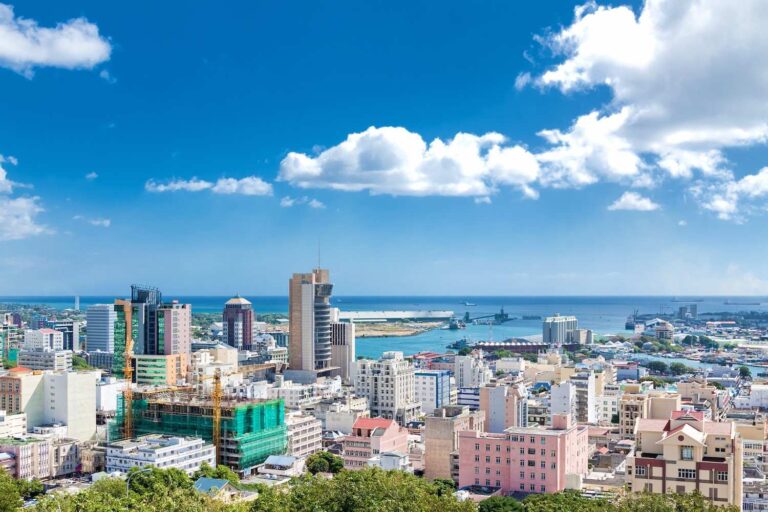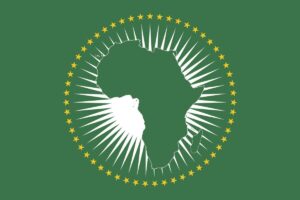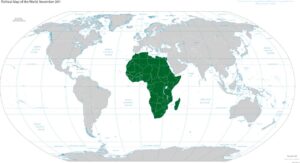Top 10 richest African countries (2024)

One of the world’s most significant continents, in terms of resource control, is Africa. Without a doubt, the African continent houses some of the wealthiest countries in the world. The region’s abundant resources contribute to its relatively high GDP per capita.
Despite tremendous riches, many nations in Africa continue to live in abject poverty. By using GDP per capita as a factor, we shall highlight the ten richest countries on the African continent.
The GDP per capita is calculated using the World Bank’s statistics. We provide the top 10 richest nations with relative economic stability and general wealth. The following are the nations in Africa with the highest per capita income.
Recommended: Poorest countries in Africa
Richest countries in Africa
| Rank | Country | GDP per capita |
|---|---|---|
| 1. | Seychelles | $13,306.7 |
| 2. | Mauritius | $8,812.1 |
| 3. | Equatorial Guinea | $8,462.3 |
| 4. | Gabon | $8,017.0 |
| 5. | Botswana | $7,347.6 |
| 6. | South Africa | $6,994.2 |
| 7. | Libya | $6,018.4 |
| 8. | Namibia | $4,729.3 |
| 9. | Eswatini | $4,214.9 |
| 10 | Tunisia | $3,924.3 |
1. Seychelles
GDP per capita is $13,306.7.
Seychelles, an island country, sits atop the list of the richest countries in Africa in terms of GDP per capita. Seychelles’ thriving tourist sector, which greatly boosts its entire economic outlook, is largely the force behind the country’s remarkable GDP per capita.
About 40% of the country’s GDP and 70% of its foreign exchange profits come from tourism. Seychelles’ currency is currently the most valuable currency on the African continent. Over the years, Seychelles has expanded its lodging and services, which has helped the country’s tourism industry grow.
2. Mauritius
GDP per capita is $8,812.1.
Mauritius is another African island nation that is thriving economically. The country serves as a tourist target for many African and European countries, including Britain, Spain and France. Mauritius also gets its economic reserves from sugarcane, fashion and design, and banking industries.
Their citizens are exempt from tax duties and the nation has a free porting system, which boosts their export revenue.
Also read: 20 Most valuable natural resources in Africa and their locations
3. Equatorial Guinea
GDP per capita is $8,462.3
Equatorial Guinea is Africa’s 3rd richest nation in terms of GDP per capita. The Central African country’s economy is largely dependent on petroleum. The country possesses a large reserve of crude, and exports to Europe and Asia.
4. Gabon
GDP per capita is $8,017.0.
Gabon is a country in central Africa that borders Equatorial Guinea, Cameroon, the Republic of the Congo, and the Gulf of Guinea on its western shore.
The country is one of Africa’s top 10 wealthiest nations by per capita income. Gabon is one of the richest nations in Africa following its abundance of natural resources, which include oil, lumber, manganese mining, and uranium ore.
Gabon’s oil output has been reduced by half as a consequence of the terrible financial downturn they recently face. Inflation grew higher in Gabon with a slow GDP growth rate of 2.7%.
5. Botswana
GDP per capita $7,347.6
Botswana is a landlocked country in southern Africa, the country ranks high in terms of GDP per capita income. Livestock farming has long been the cornerstone of Botswana’s economy; nonetheless, it has improved over time. Exports of cattle and diamonds have significantly aided Botswana’s economic growth.
6. South Africa
GDP per capita is $6,994.2.
Transport gear, processed minerals, chemicals, textiles, and food goods make up the majority of South Africa’s economy, accounting for nearly half of its GDP. The industrial sector accounts for more than 35% of the GDP, and 90% of exports are made up of minerals, mostly coal, gold, and diamonds. The nation is one of the richest in Africa due to its abundance of resources, including iron ore and chrome. Even so, the economy is performing well, with one of Africa’s highest annual GDP growth rates of 3%. In 2014, agriculture accounted for 22.8% of employment and contributed around 7% to the GDP.
More than half of South Africa’s products, or 4% of global commerce in minerals and metals, are made up of a range of minerals that are produced in South African mines, including gold, diamonds, coal, vanadium, manganese, iron ore, copper, and tin.
But South Africa’s economy has numerous problems, such as high unemployment, more people living in poverty, and a fast-growing population.
Recommended: 10 Most powerful countries in Africa
7. Libya
GDP per capita is $6,018.4
Libya is a North African country and is the 7th richest nation on the African continent. The country exports petroleum which accounts for the majority of its GDP, in addition, Libya also trades in agriculture and manufacturing.
In tourism, Libya has a strong base, with hundreds of Africans migrating to Libya en route to Europe by land.
8. Namibia
Namibia’s per capita GDP is $4,729.3.
The mining, agricultural, manufacturing, and tourist sectors generate more than half of Namibia’s revenue. Agriculture adds around 12% of the GDP, whereas mining attracts about 30%.
Brisket, mutton, and goat are Namibia’s principal agricultural products, such as dairy goods, tobacco, and barley. The stable Namibian economy has a consistent growth rate of above 4%, which helps explain its high GDP per capita.
9. Eswatini
GDP per capita is $4,214.9
Eswatini is a Southern African nation principally dealing with mining and agriculture. The sugarcane industry is one of Eswatini’s biggest trades.
The country was formerly known as Swaziland. It has a strong economic outlook with an overall growth rate of 7.4% as of 2021.
10. Tunisia
GDP per capita is $3,924.3.
Tunisia has a population of approximately 12 million. The Northern African nation adds a significant impact on African politics as well as the overall economic strength of the continent. Chemicals, semi-finished items, electrical equipment, and transportation equipment make up the majority of Tunisia’s exports. The Sahara desert’s aridity limits Tunisia’s available land resources.
However, Tunisia has the potential for human resources, which attracts international investors from countries like Germany and Italy. Tourism, manufacturing, and mining together make up around 15% of Tunisia’s GDP, which is mostly dependent on these sectors. The success of Tunisia’s economy can be traced back to its economic policies, which have created a safe financial environment that encourages investment from other countries.
Tunisia’s reliance on outside aid decreased in 2014 from around $700 million in prior years to $183 million.
Read: Top 5 sectors to invest in Africa
Conclusion
Overall, the listed African nations have strived to use their resources and production strengths to create a stronger, more vibrant economy that can sustain their growing populations.
Africa’s biggest economy, Nigeria, has a GDP per capita of $2,085.0 as of 2021.
Don't miss a thing. Follow us on Telegram and Follow us on WhatsApp. If you love videos then also Subscribe to our YouTube Channel. We are on Twitter as MakeMoneyDotNG.





